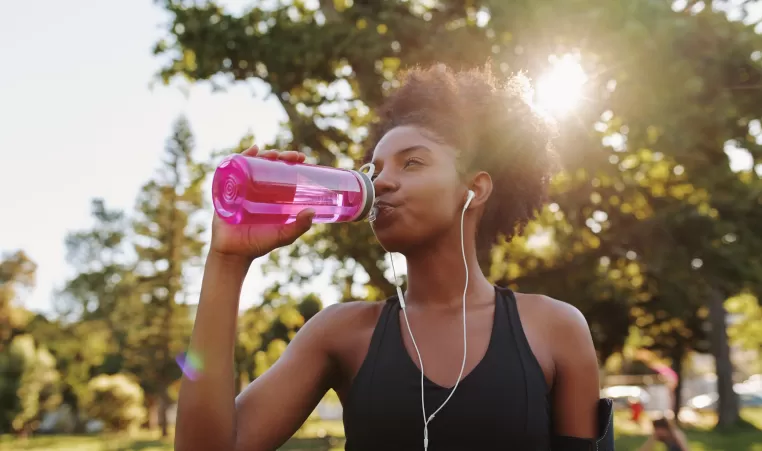Electrolytes

By Susan Hickey
Summer is here to stay, and it’s time to get outside and have fun with our friends and families. Many of those fun activities will involve some kind of physical exercise, which leads to a lot of sweat. It’s important that we stay safe while having fun, and while sweating is a way for the body to cool itself off, it’s also a reminder that we need to refuel periodically while being active outside. Refueling is more than just hydration – it’s also maintaining a proper electrolyte balance so our bodies can function properly.
Electrolytes are essential elements that your body requires to perform activities like muscle contraction, nerve signal delivery, and heartbeat regulation. The most commonly discussed are sodium and potassium, but others like magnesium, chloride and calcium are also important. These substances are crucial for proper muscle functioning in activity. Without enough sodium and potassium, muscles may experience cramping, pain, and fatigue. Mild sodium deficiency can also lead to decreased blood pressure due to fluid imbalance, which can present as dizziness or lightheadedness.
When we sweat during intense activity, we lose not only water, but also electrolytes. The problem comes when we attempt to strictly rehydrate with plain water, but fail to address the loss of sodium and other electrolytes. A significantly increased water intake without also ingesting electrolytes can lead to a critical electrolyte imbalance known as hyponatremia. Hyponatremia, if recognized quickly, can be treated by electrolyte replacement. However, if not treated, it can be fatal.
The symptoms of hyponatremia can include poor balance, muscle cramps, headache, impaired cognition, and nausea. As it progresses, the mental status changes become more severe and the person can become lethargic and have seizures. Hyponatremia is a medical emergency that requires immediate professional treatment.
Hyponatremia can be avoided by ensuring adequate electrolyte replacement during strenuous exercise, whether inside or outside. There are a variety of supplements readily available to help ensure adequate sodium levels. These range from salt tablets to energy bars to powders that can be added to water bottles. The frequency of using these products depends on your type of product preference as well as the length and intensity of your workout. For example, one might carry salt tablets with them on a run and ingest every 30 minutes as directed on the bottle. Or someone might add an electrolyte powder to their water bottle and sip it during their workout, thus getting a regular sodium boost throughout the activity.
Electrolyte balance is essential to ensuring your body functions properly while exercising, particularly in summer heat. Remember to plan ahead when getting your gear together for that long bike ride or run that you are arranging with friends. Bring plenty of water, sunscreen, and don’t forget your salt tabs!
For More Information on Electrolytes:
Electrolytes and Exercise: Keeping Your Body Balanced
Susan Hickey is a part-time physical therapist and SAHM of 3. Susan and her family are Coffman YMCA members.
